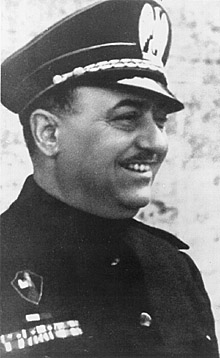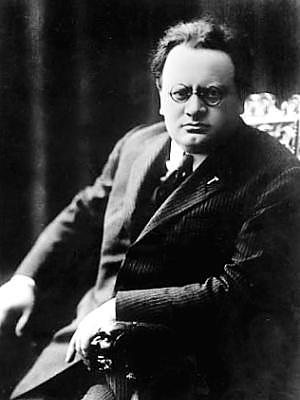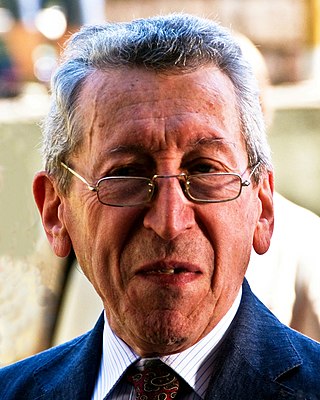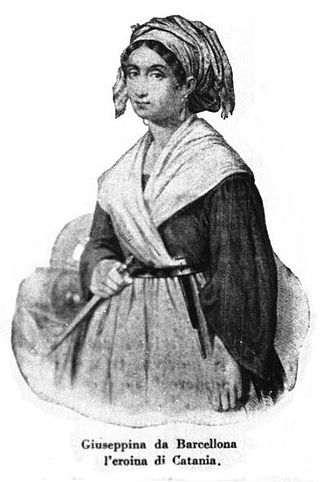Agenzia Stefani was the leading press agency in Italy from the mid-19th century until the end of World War II. It was founded by Guglielmo Stefani on 26 January 1853 in Turin, and was closed on 29 April 1945 in Milan.
Telegrafia privata – Agenzia Stefani (Private Telegraph – Stefani Agency) [1] was created on January 26, 1853, in Turin by Guglielmo Stefani, who was of Venetian origin and was the director of the newspaper Gazzetta Piemontese, with support from Camillo Cavour.
Under the Cavour government, the agency gained huge advantages through the granting of secret funds while the Statuto Albertino banned privileges and private monopolies. [2] The radical press, meanwhile, suffered from restrictions on freedom of information. [3] As well, Agenzia Stefani, being in a monopoly situation, became a government tool for media control of the Kingdom of Sardinia. [4]
After the death of Guglielmo Stefani, in 1861, the agency resurrected its collaboration with British agency Reuters and French agency Agence France-Presse (Havas). It was this, the world's first news agency, that acquired 50% of Agenzia Stefani in 1865.
As an unofficial government agency, the "Stefani" followed different transfers of Italian capital cities, from Turin to Florence in 1865, then to Rome in 1871 [5]
In 1881, Hector Friedländer took control and kept it for 37 years. Under his direction, the agency remained close to the government, contributing strongly to blunting the opinions of the press towards the controversial events of the era, such as Battle of Adwa (1896), Bava-Beccaris massacre (1898), the assassination of Umberto I of Italy (1900), Italo-Turkish War (1911-1912) and the casual changes in international alliances preceding the First World War.
In 1888, Agenzia Stefani was key to Italy's diplomatic strategies; the Triple Alliance potenziamento, coordinated by Prime Minister Francesco Crispi, tried to separate Agenzia Stefani from French influence (by then it was 50%-owned by the French news agency Havas) in favour of an alliance with Prussian and Austro-Hungarian agencies. London, Berlin, and Vienna were involved in negotiations. Crispi wrote, "Stefani is entirely in our hands and benefits morally and materially from the government". [6]
During the course of the 1890s, Francesco Crispi was a promoter of a break with Havas, accused of publishing false and biased news, to encourage the foreign policy of France. A mutual exchange agreement was signed with the German Continentalen, with the Austrian Correspondenz-Office and Reuters, to allow governments to control and censor, if necessary, the news from, and for, abroad.
Throughout the First World War, Agenzia Stefani received exclusive access to the diffusion of the dispatches of army staff, and 1920, an agreement was reached with the Giolitti government, which assigned the task of disseminating government information to the press prefects and government offices. Pursuant to the agreement, the appointment of the director and the major foreign correspondents were subject to government approval. The following year a new agreement with Havas granted it access to information from the United States and Latin America, thanks to cable connections created between New York City and Paris.
After the rise of fascism, Benito Mussolini grasped the potential usefulness of such a tool and on April 8, 1924, he placed Agenzia Stefani under the control of the sansepolcriste, Manlio Morgagni who, in a short time, transformed the voice of the government within Italy as well as abroad.
The first thing that I read in the morning are the Stefani reports. I also see Morgagni often and willingly.
— Benito Mussolini [7]
In 1924, it had 14 bureaus in Italy, with 160 correspondents in Italy and 12 abroad, who succeeded daily at "working" an average of 165 incoming dispatches and 175 outgoing. Under Morgagni's direction, the agency underwent important development, to the extent that in 1939 there were 32 Italian bureaus and 16 others abroad, with 261 correspondents in Italy and 65 abroad, who every day processed an average of 1270 incoming dispatches and 1215 outgoing.
Following the arrest of Mussolini on July 26, 1943, Manlio Morgagni committed suicide.
With the creation of the Italian Social Republic, the state took ownership of Agenzia Stefani and its headquarters was moved to Milan, and placed under the direction of Luigi Barzini senior. Its last director, Ernesto Daquanno, was shot at Dongo with the dignitaries accompanying Mussolini.
Dissolved on April 29, 1945, the technical structure and its organization were transferred to the new ANSA.

A news agency is an organization that gathers news reports and sells them in to subscribing news organizations, such as newspapers, magazines and radio and television broadcasters. News agencies are known for their press releases. A news agency may also be referred to as a wire service, newswire, or news service.

Francesco Crispi was an Italian patriot and statesman. He was among the main protagonists of the Risorgimento, a close friend and supporter of Giuseppe Mazzini and Giuseppe Garibaldi, and one of the architects of Italian unification in 1860. Crispi served as Prime Minister of Italy for six years, from 1887 to 1891, and again from 1893 to 1896, and was the first Prime Minister from Southern Italy. Crispi was internationally famous and often mentioned along with world statesmen such as Otto von Bismarck, William Ewart Gladstone, and Robert Gascoyne-Cecil, 3rd Marquess of Salisbury.

The Expedition of the Thousand was an event of the unification of Italy that took place in 1860. A corps of volunteers led by Giuseppe Garibaldi sailed from Quarto near Genoa and landed in Marsala, Sicily, in order to conquer the Kingdom of the Two Sicilies, ruled by the Spanish House of Bourbon-Two Sicilies.
Il Popolo d'Italia was an Italian newspaper published from 15 November 1914 until 24 July 1943. It was founded by Benito Mussolini as a pro-war newspaper during World War I, and it later became the main newspaper of the Fascist movement in Italy after the war. It published editions every day with the exception of Mondays.

The Kingdom of Italy was a state that existed from 17 March 1861, when Victor Emmanuel II of Sardinia was proclaimed King of Italy, until 2 June 1946, when civil discontent led to an institutional referendum to abandon the monarchy and form the modern Italian Republic. The kingdom was established through the unification of several states over a decades-long process, called the Risorgimento. That process was influenced by the Savoy-led Kingdom of Sardinia, which can be considered Italy's legal predecessor state.

The Agenzia Nazionale Stampa Associata is the leading news agency in Italy and one of the top ranking in the world. ANSA is a not-for-profit cooperative, whose members and owners are 36 leading news organizations in Italy.
Italian intelligence agencies are the intelligence agencies of Italy. Currently, the Italian intelligence agencies are the Agenzia Informazioni e Sicurezza Esterna (AISE), focusing on foreign intelligence, and the Agenzia Informazioni e Sicurezza Interna (AISI), focusing on internal security. They form part of the Department of Information for Security, which in turn is part of the Presidency of the Council of Ministers. The agencies have been reorganized multiple times since the birth of the Italian Republic in 1946 to attempt to increase effectiveness.
The historian John A. Davis said in 2005, "Everyone, it seems, is busy rethinking, revisioning, revisiting, remaking, remapping or demythologizing the Risorgimento. However, it is not the Risorgimento that is being revisited but the changing images that have made it the potent founding myth of the Italian nation for successive generations of Italians." In the 20th century, and especially since the end of the Second World War, the received interpretation of Italian unification, the Risorgimento, has become the object of historical revisionism. The justifications offered for unification, the methods employed to realise it and the benefits supposedly accruing to unified Italy are frequent targets of the revisionists. Some schools have called the Risorgimento an imperialist or colonialist venture imposed by Savoy.
Guglielmo Stefani was an Italian journalist and founder of the influential press agency Agenzia Stefani.

Manlio Morgagni was an Italian Fascist, journalist, former mayor of Milan, former member of the Senate of Italy, and director of the prominent news agency Agenzia Stefani during a period when it was closely aligned with the Fascist regime of Benito Mussolini.
Sansepolcrismo is a term used to refer to the movement led by Benito Mussolini that preceded Fascism. The Sansepolcrismo takes its name from the rally organized by Mussolini at Piazza San Sepolcro in Milan on March 23, 1919, where he proclaimed the principles of Fasci Italiani di Combattimento, and then published them in Il Popolo d'Italia, on June 6, 1919, the newspaper he co-founded in November 1914 after leaving Avanti!

Arnaldo Mussolini was an Italian journalist and politician. He was the brother of Italy's Fascist dictator Benito Mussolini, and a Fascist himself. He was also the brother of Edvige Mussolini and the brother-in-law of Rachele Mussolini.

Sergio Romano is an Italian diplomat, writer, journalist, and historian. He is a columnist for the newspaper Corriere della Sera. Romano is also a former Italian ambassador to Moscow.

The Plombières Agreement of 21 July 1858 was a secret verbal agreement which took place at Plombières-les-Bains between the chief minister of Piedmont-Sardinia, Count Cavour, and the French Emperor, Napoleon III. Some older English sources refer to it as the Treaty of Plombières. In modern times, it is merely referred to as an "agreement", since nothing was signed.
Tullo Morgagni was an Italian journalist and sports race director. He was the founder of several Italian cycling races, notably the Giro d'Italia, Milan–San Remo and the Giro di Lombardia.

Giuseppa Bolognara Calcagno (Italian pronunciation: [dʒuˈzɛppa boloɲˈɲaːra kalˈkaɲɲo]), better known as Peppa la cannoniera (Josie the Cannoneer), in Sicilian: Peppa a cannunera, (Barcellona Pozzo di Gotto, 1826–1884), was an Italian patriot.
Unione radiofonica italiana or URI, was an Italian radio broadcaster founded in Turin on 27 August 1924. It was the exclusive radio broadcaster of the Kingdom of Italy.
Ernesto Daquanno was an Italian journalist during the Fascist regime, the last director of Agenzia Stefani, Italy’s main press agency.
Sergio Lepri was an Italian journalist. He was director of ANSA from 1961 to 1990.

Mario Appelius was an Italian journalist and radio presenter, best known for being one of the most prominent Fascist propagandists during World War II. He was famous for his catchphrase, Dio stramaledica gli inglesi!.